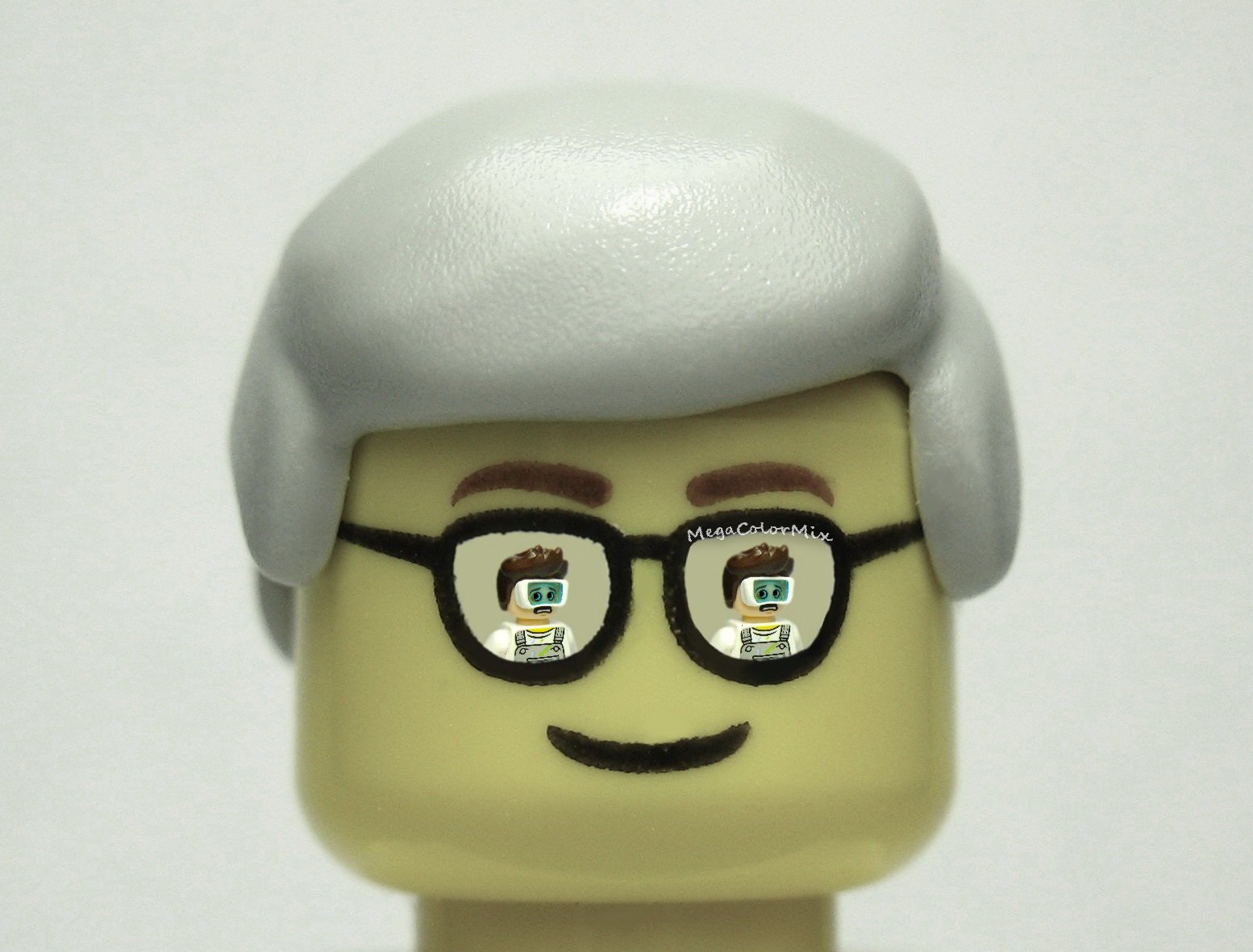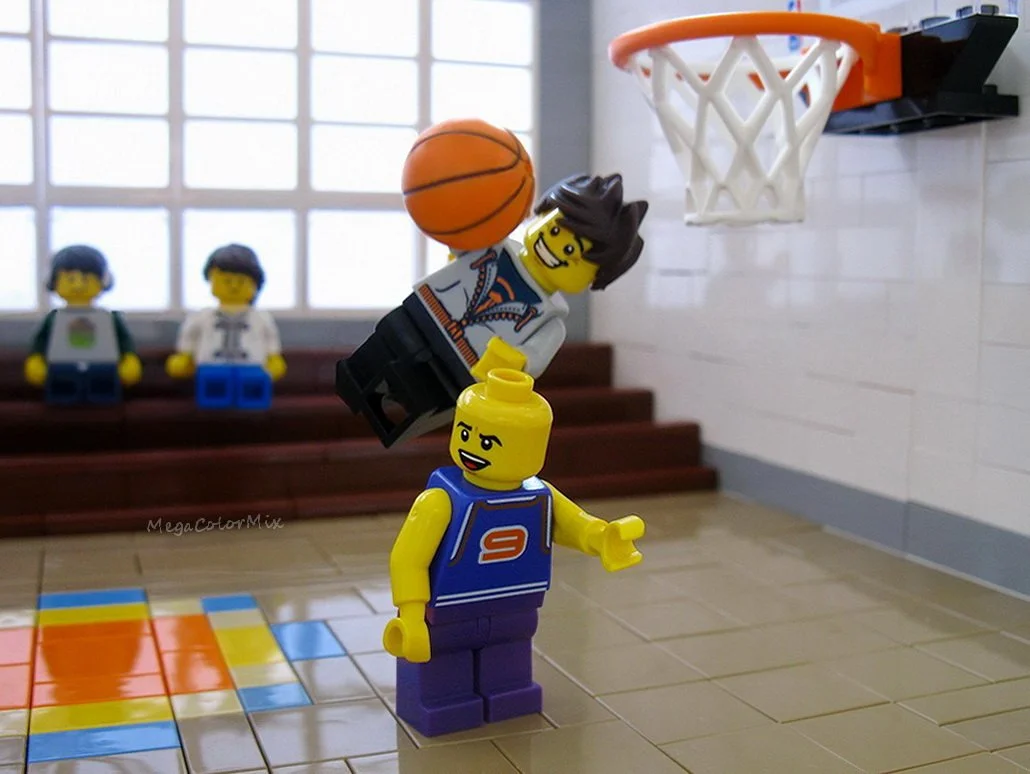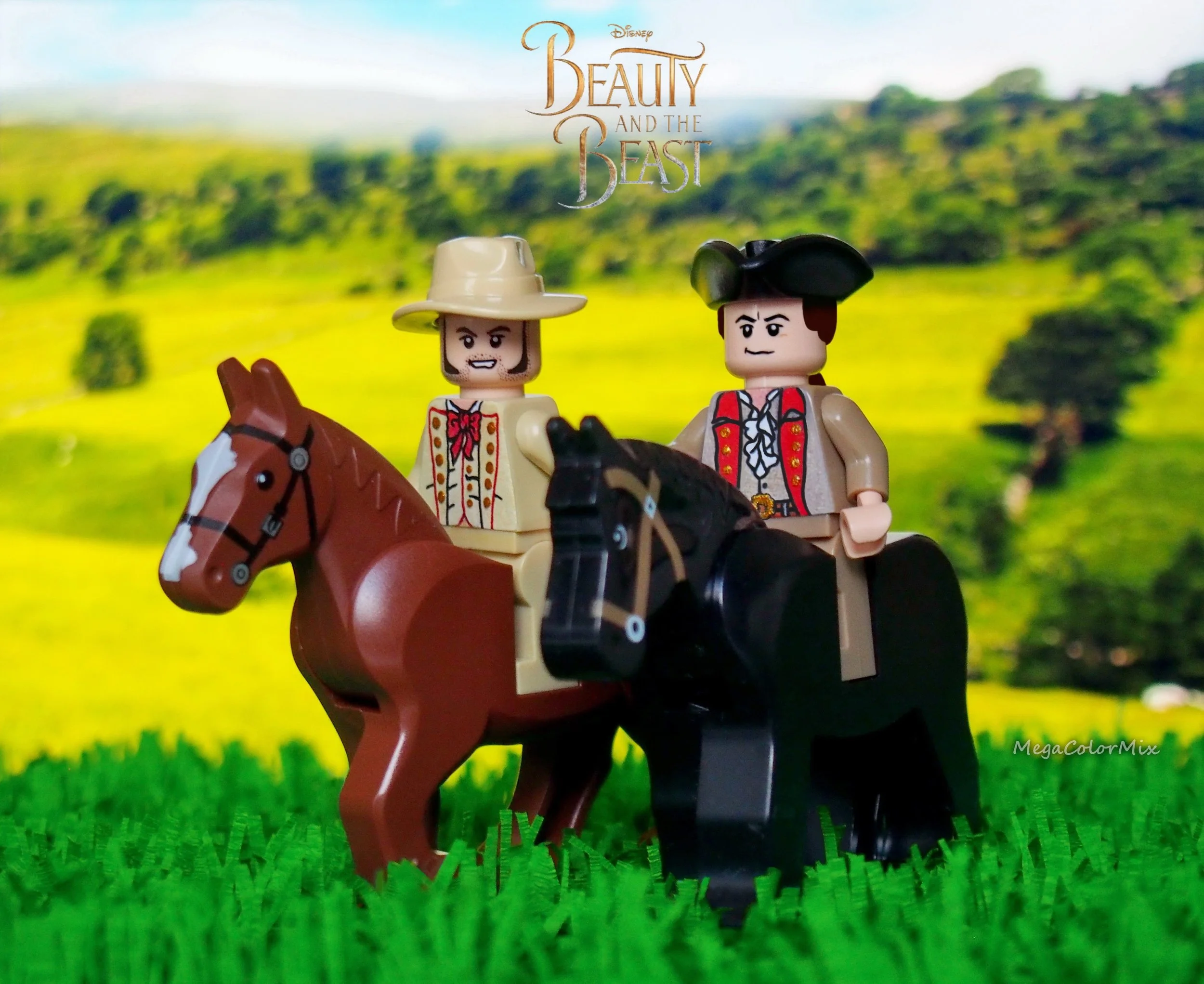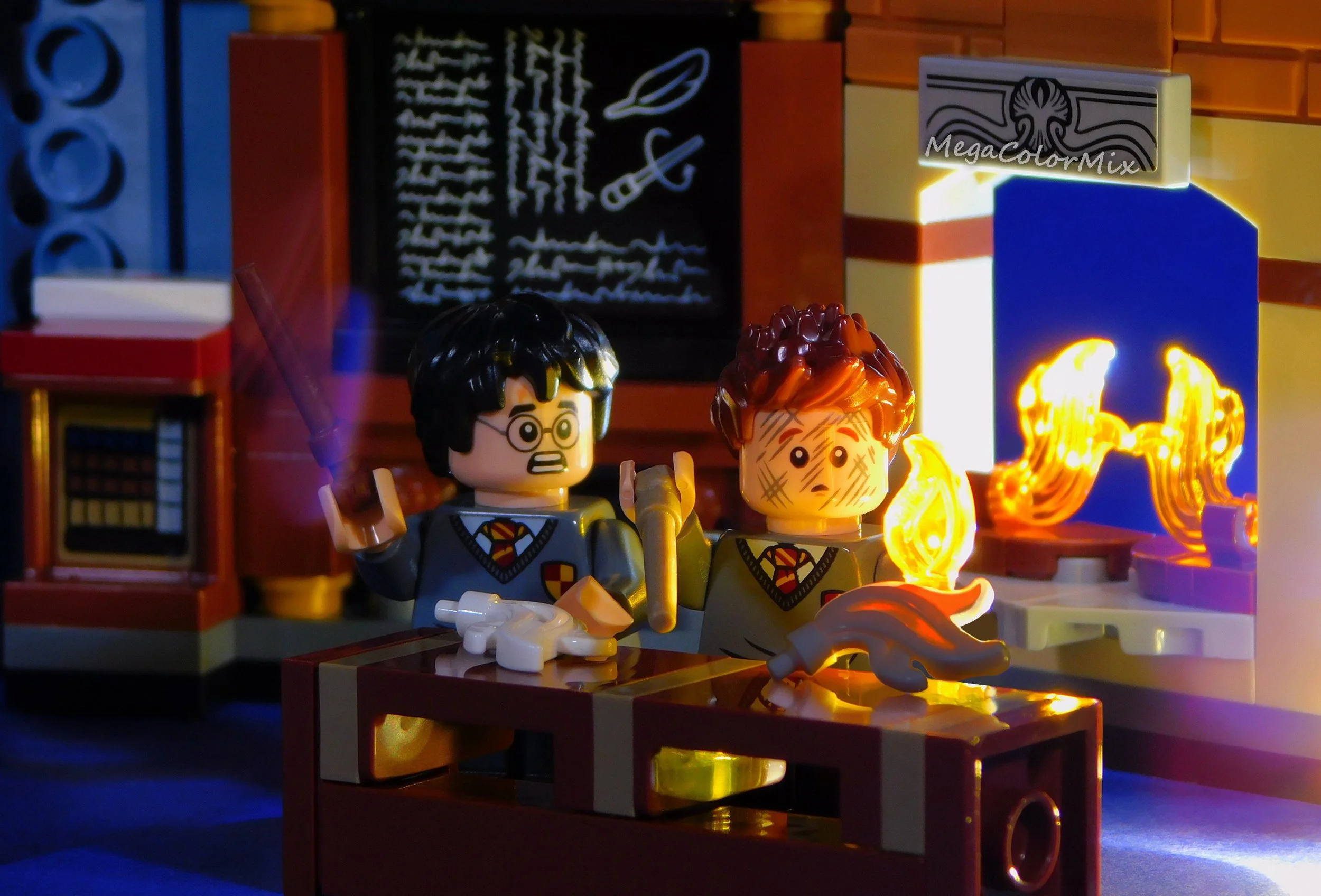Double Take: Cinematic Two-Shots in LEGO Photography
/What better excuse than Groundhog Day (on 2-2-22 no less) to do a double-take? Let’s learn about the cinematic “two-shot” technique and how it can turn your LEGO photography into more of a dynamic duo.
The BrickNerd community is a wonderful medium of international culture as told through the prism of LEGO creativity. I've already touched on the topic of the connection between LEGO products and culture on TV. This time around, I'm going to focus on LEGO photography taken in an interesting and specific cinematic style: "two-shot" composition.
For reference, a two-shot is a type of picture or moment in which the frame encompasses two persons. It usually shows the characters in a way so you can clearly see both of their faces. Classic 'two shot' setups from movies and photography include two people in profile, two people looking towards the camera (either side by side or with one behind the other), or two people shown entirely in the frame undertaking some kind of action. Sometimes it can look somewhat unrealistic but the two-shot represents a special flavor of a genre.
Let's take a look at some setups in LEGO that reflect this double cinematic concept.
A Mirrored Reflection
Let’s start with something unconventional and right out of the Matrix. Mirrored glasses have enough place for the second character! The shot below offers a different perspective of an otherwise unremarkable, ambiguous scene. What do you think of the smiling man with the glasses? Is he a spy or a good character? Is he catching a villain or helping someone experience virtual reality for the first time? Is the second person a victim or our protaganist?
As a two-shot this moment now has more depth and intrigue than just seeing two figures looking at each other.
Competition
This photograph is based on “The Amazing Spider-Man” movie with Andrew Garfield where he shows off some new Spidey skills while playing basketball. The photo shows the contrast of the competitors' emotions: Peter Parker's long-expected victory and Flash Thompson's utter perplexity.
This game was the perfect way to resolve the life conflict, show new skills and show us how a two-shot can be used illustratively and competitively.
A Different Point of View
This recreation of a movie still from the recent live-action “Beauty and the Beast” story presents Gaston and his friend Lefou together in a single frame. This is a “full two-shot” which is usually used as an establishing shot to see how characters surmise their surroundings. We can imagine these two characters watching Belle from afar with different thoughts in their minds. We can see the different on their faces.
Gaston is sure of himself: "Nobody can resist ADMIRING me." While Lefou longs with irony: "Nobody DESERVES Gaston!"
A Superhero’s Love
In “The Amazing Spider-Man 2”, Peter Parker says the following: “We're not on different paths. You're my path! I know there’s a million reasons why we shouldn't be together. I know that. But I'm tired of them. I’m tired of every single one of them. We’ve all gotta make a choice, right? Well, I choose you.”
This scene is an example of a “close two-shot.” This is a close-up frame of two people shot with a long lens, usually used for moments of romantic connection or dramatic tension. You can certainly say that this scene is a beginning of an ending full of both drama and connection. The framing reinforces the romantic atmosphere even though they are standing atop a bridge with wide-open spaces around them, yet it still feels intimate.
Classic Two-Shot
Finally, we end with a classic two-shot. This is the most common two-person composition in the cinematic traditions, typically with two characters looking towards/beyond the camera and sharing their different reactions to one situation.
In this moment inspired from Harry Potter, we can see both wizarding pupils framed in the same shot having vastly different reactions to making a feather float in the air… But the two-shot shows the comparison fairly well, frames the scene, and lets you know exactly what is going on. If this were a silent film you’d still know what’s going on.
Two By Two
So I hope you’ve learned a new concept, even if you’ve already been using it in practice unintentionally. Two subjects in a MOC or photo will almost always be more dynamic. That’s the beauty of a two-shot since it inherently conveys a story.
So on this day of twos (too bad it isn’t a TWOs-day…), do a double take. Use these examples to show the interaction and emotions of two of your subjects/characters in order to tell a narrative. You’ll be surprised by how enriching of a technique a two-shot can be.
Have you ever used a two-shot intentionally (or unintentionally) in LEGO photography? Let us know in the comments below!
Do you want to help BrickNerd continue publishing articles like this one? Become a top patron like Charlie Stephens, Marc & Liz Puleo, Paige Mueller, Rob Klingberg from Brickstuff, John & Joshua Hanlon from Beyond the Brick, Megan Lum, and Andy Price to show your support, get early access, exclusive swag and more.





















